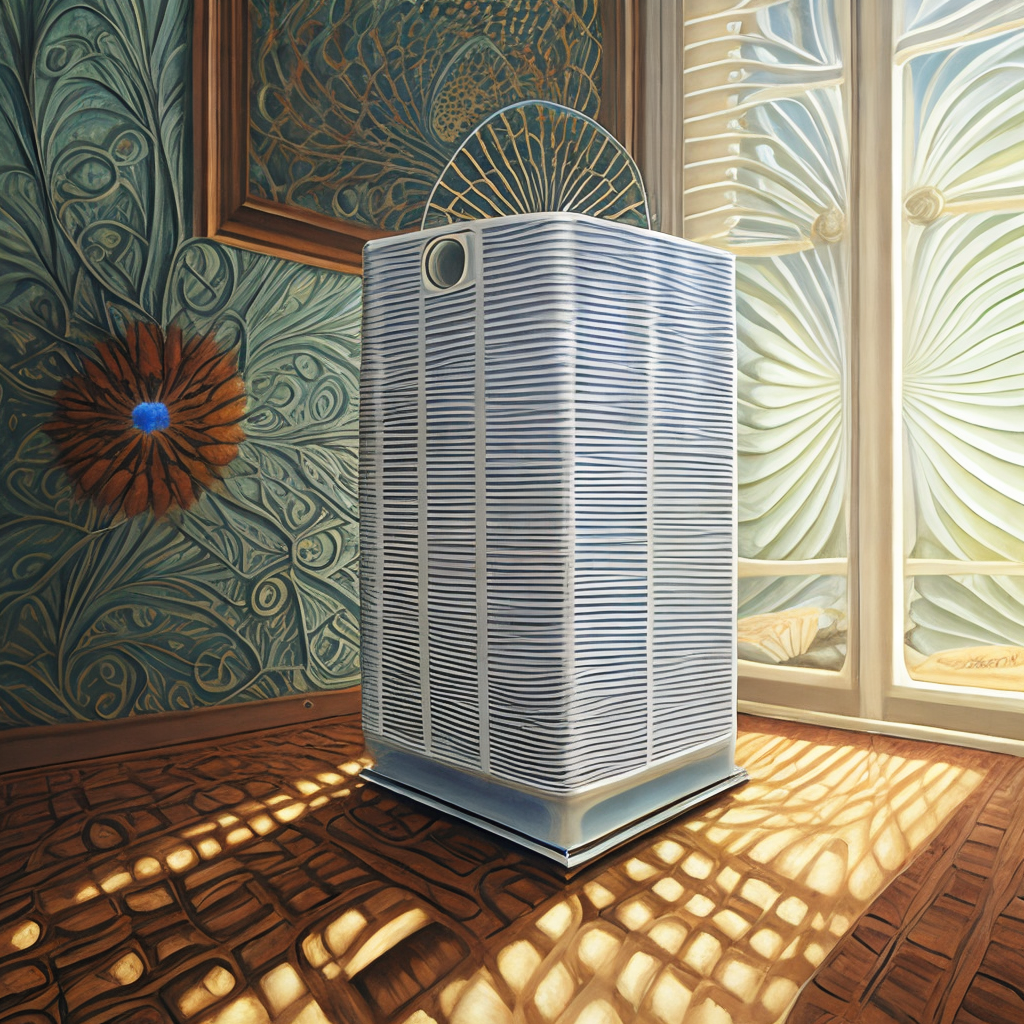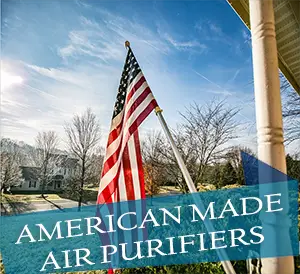
In your quest to live healthily, you may have found yourself seeking the best air purifier for mycotoxins. If that’s the case, let me assure you: you’re in the right place. We are about to embark on a journey towards cleaner, purer air for you and your loved ones.
Understanding Mycotoxins: The Invisible Enemies
Mycotoxins are toxic substances born out of certain types of fungi. Under suitable conditions of temperature and humidity, these fungi flourish and release mycotoxins into your living environment, potentially leading to a range of health issues from respiratory problems to neurological disorders.
An air purifier specifically designed to tackle mycotoxins is the hero in this story, providing a critical solution for improving indoor air quality and protecting your health.
Why Is an Air Purifier for Mycotoxins Crucial for Healthy Living?
While the mention of mycotoxins might be intimidating, there’s no need for anxiety. An air purifier equipped to handle mycotoxins can make a significant difference in your living space. Here are a few reasons why such an air purifier is a vital tool for health:
- Health Protection: Prolonged exposure to mycotoxins can lead to both immediate and long-term health problems. A mycotoxins-specific air purifier can safeguard you and your family from these risks.
- Enhancement of Indoor Air Quality: An air purifier doesn’t just filter out mycotoxins, it also eliminates a whole host of other pollutants. This results in overall fresher, cleaner air within your home.
- Prevention of Mold and Fungus Growth: Mycotoxins come from fungi and mold. By eliminating the spores that spawn these organisms, an air purifier prevents future growth and further mycotoxin production.
Choosing the Best Air Purifier for Mycotoxins: Key Features to Look For
The world of air purifiers can seem overwhelming, given the wide array of products in the market. When choosing the best air purifier for mycotoxins, you should keep a few crucial factors in mind:
- True HEPA Filter: High-Efficiency Particulate Air (HEPA) filters can capture particles as small as 0.3 microns. This makes them highly effective against mold spores and mycotoxins.
- Activated Carbon Filter: This type of filter is excellent for removing odors and harmful gases. It can further improve the indoor air quality, making your living space more comfortable.
- UV-C Light: Ultraviolet-C light is a germicide. This means it can destroy microorganisms, including mold spores. By eliminating these spores, a UV-C light can help prevent the production of mycotoxins in your home.
The Best Air Purifiers for Mycotoxins: Expert’s Top Picks
We’ve expanded our list to five high-performing air purifiers capable of handling mycotoxins, each offering unique advantages:

Alen BreatheSmart 75i Large Room Air Purifier
-
- Pros: High-capacity filtration system, whisper-quiet operation, smart sensor technology
- Cons: Higher price point, bulkier design

IQAir HealthPro Plus Air Purifier
-
-
- Pros: HyperHEPA filter, powerful fan, excellent for large rooms
- Cons: Expensive, no smart connectivity
-

Molekule Air Large Room Air Purifier
-
- Pros: Advanced PECO technology, sleek design, quiet operation
- Cons: Higher price, smaller coverage area

-
- Pros: Medical-grade H13 filter, high CADR rating, reasonable price
- Cons: Louder at higher fan speeds, filters need frequent replacement

Coway Airmega 400 Smart Air Purifier
-
- Pros: Dual filtration system, smart enabled, large coverage area
- Cons: Higher cost, filters can be expensive to replace
Here’s a comparison:
| Product | Filter Type | Room Size | Extra Features | Pros | Cons |
|---|---|---|---|---|---|
| Alen BreatheSmart 75i | True HEPA, Activated Carbon | Up to 1,300 sq. ft. | Smart sensor, WhisperMax technology | High-capacity filtration, Quiet operation | Higher price, Bulkier design |
| IQAir HealthPro Plus | HyperHEPA, Activated Carbon | Up to 1,125 sq. ft. | 6 fan speeds, Remote control | Excellent for large rooms, Powerful fan | Expensive, No smart connectivity |
| Molekule Air | PECO | Up to 600 sq. ft. | Quiet operation, Smartphone control | Advanced technology, Sleek design | Higher price, Smaller coverage area |
| Medify MA-40 | Medical-grade H13 | Up to 800 sq. ft. | 3 fan speeds, Timer | Reasonable price, High CADR rating | Louder at high fan speeds, Frequent filter replacement |
| Coway Airmega 400 | True HEPA, Activated Carbon | Up to 1,560 sq. ft. | Smart sensor, Sleep mode | Large coverage area, Smart enabled | Higher cost, Expensive filters |
Frequently Asked Questions (FAQs) About Mycotoxins and Air Purifiers
In your journey towards mycotoxin-free air, you may have some queries. We have compiled and answered some of the most frequently asked questions about air purifiers and mycotoxins.
1. Do air purifiers get rid of mycotoxins?
Yes, specific air purifiers are designed to eliminate mycotoxins from the air. They use advanced technologies like True HEPA filters, Activated Carbon filters, and UV-C lights. A True HEPA filter can capture particles as small as 0.3 microns, effectively trapping mold spores that produce mycotoxins. Activated Carbon filters excel in removing odors and harmful gases, while UV-C lights can destroy mold spores, further preventing the production of mycotoxins.
2. Is there an air purifier that takes mold out of the air?
Absolutely! Many air purifiers on the market are capable of removing mold spores from the air. Models equipped with True HEPA filters and UV-C light technology are particularly effective. The HEPA filter captures the mold spores, and the UV-C light destroys them, preventing future mold growth.
3. Do carbon filters remove mycotoxins?
Activated carbon filters are mainly known for their ability to absorb odors and gases. However, they can also capture some airborne particles, potentially including mycotoxins. However, for thorough mycotoxin removal, a combination of a True HEPA filter and UV-C light technology is recommended.
4. What kills mycotoxins in the air?
Air purifiers equipped with UV-C light technology can effectively kill mold spores that produce mycotoxins. Additionally, regular cleaning and maintenance of your living spaces, combined with effective humidity control, can also help in reducing mycotoxins.
5. How do I clean my house of mycotoxins?
Apart from using a high-quality air purifier, cleaning your house regularly, addressing dampness, and maintaining a good ventilation system can help keep mycotoxins at bay. If mold is already present, it might be necessary to seek professional help for mold remediation.
Remember, clean air isn’t just a luxury—it’s a necessity for healthy living. You deserve to breathe easy. Stay healthy, stay happy! And if you’re looking for more air purifier recommendations, don’t forget to check out our previous article on the best car air purifier for smokers.


